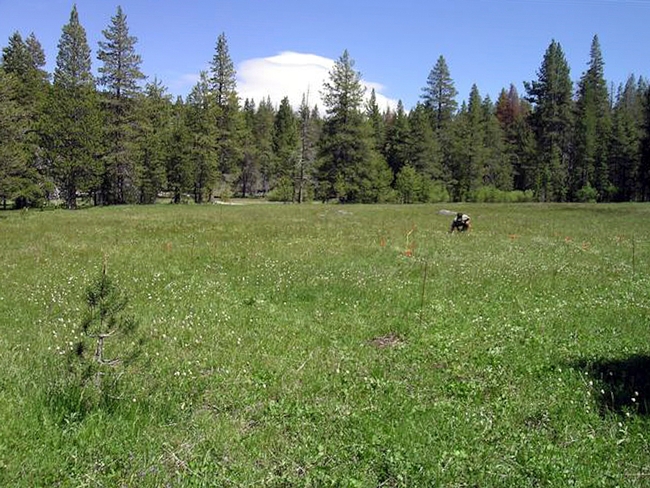The times, they change. Standard textbook knowledge, that can change, too.
It did today.
For several decades, few people challenged "the hump-shaped model" developed in the early 1970s by British ecologist Philip Grime who proposed that the number of species rises, then declines with increasing productivity.
Today an international team of 58 ecologists announced that habitat productivity does not predict the diversity of plant species, as previously assumed for several decades.
The groundbreaking research, to be published Sept. 23 in the journal Science (the embargo lifted today at 2 p.m., Eastern Standard Time) shows “no clear relationship between productivity and the number of plant species in small study plots,” said Utah State University plant ecologist Peter Adler, lead author of the paper.
The ecologists sampled 48 diverse grassland sites on five continents in an innovative, unprecedented project partially supported by the National Science Foundation (NSF).
The abstract:
For more than 30 years, the relationship between net primary productivity and species richness has generated intense debate in ecology about the processes regulating local diversity. The original view, which is still widely accepted, holds that the relationship is hump-shaped, with richness first rising and then declining with increasing productivity. Although recent meta-analyses questioned the generality of hump-shaped patterns, these syntheses have been criticized for failing to account for methodological differences among studies. We addressed such concerns by conducting standardized sampling in 48 herbaceous-dominated plant communities on five continents. We found no clear relationship between productivity and fine-scale richness within sites, within regions, or across the globe. Ecologists should focus on fresh, mechanistic approaches to understanding the multivariate links between productivity and richness.
The paper in Science is one of the first to emerge from the research, launched five years ago when the ecologists formed the Nutrient Network or “NutNet,” a cooperative research initiative dedicated to investigating biodiversity and ecosystem processes in global grasslands.
University of Minnesota researchers Elizabeth Borer and Eric Seabloom received funding from NSF to coordinate the network research. NSF also funds an annual meeting workshop in Minneapolis, where the researchers gather to analyze data.
Among the 58 ecologists participating: Louie Yang, assistant professor of entomology at UC Davis.
When asked about the research, Yang commented: “It’s a really innovative approach to ecology. We conducted a coordinated study in diverse grasslands at the 48 sites and we pooled our data together to address some persistent issues in the field. In this paper, we show that plant diversity is not predicted by productivity in any general or simple way; instead, it looks like patterns of plant diversity result from more complex processes which are variable at local, regional and global scales.”
Yang’s research contributions to the network came from a field site at the Sagehen Creek Field Station, located near Truckee in Nevada County. He and Dan Gruner of the University of Maryland have managed a montane or highland meadows site (elevation 6500 feet) since 2007 for their research.
And how did the ecologists measure productivity? Yang talks about this on the UC Davis Department of Entomology website. You'll also want to read what Michael Willig of the University of Connecticut has to say about the paper: Perspective on Biodiversity and Productivity.
Willig begins with: "Researchers predict that human activities—especially landscape modification and climate change—will have a considerable impact on the distribution and abundance of species at local, regional, and global scales in the 21st century."
Meanwhile, we're anxiously awaiting more published research from the Nutrient Network.
Attached Images:

This is the research site at the Sagehen Creek Field Station managed by ecologists Louie Yang of UC Davis and Dan Gruner of the University of Maryland. (Photo Courtesy of Louie Yang)